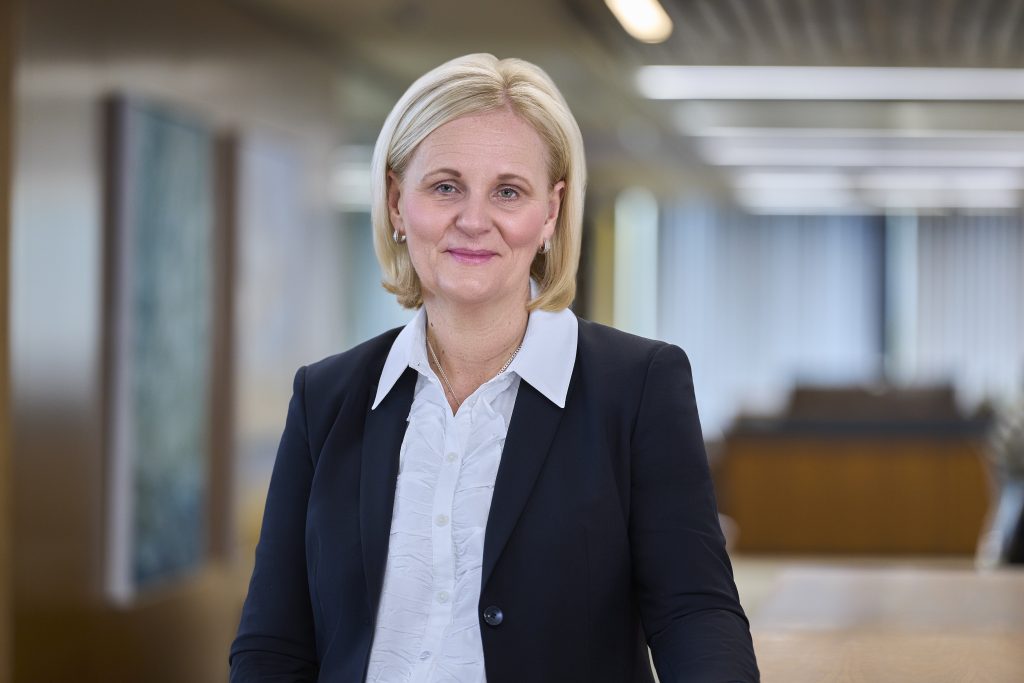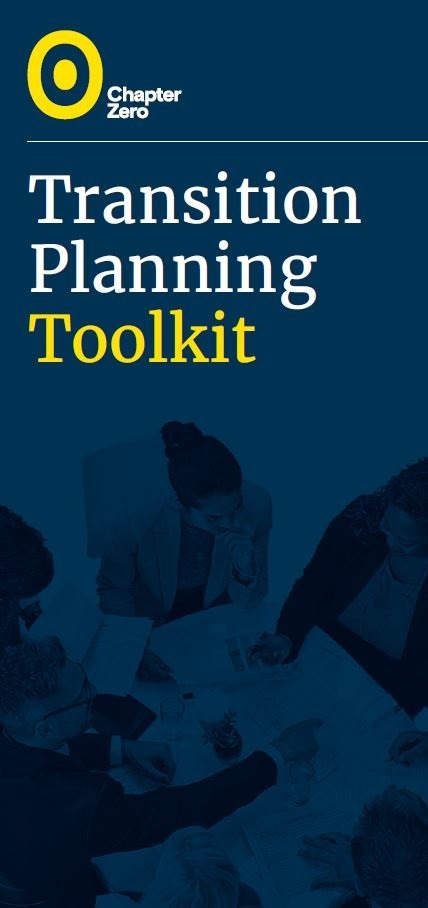
Transition Planning Toolkit: Barriers and Enablers
Updated: November 2024
Barriers and Enablers
This final tool considers actions you can take to overcome barriers and leverage key enablers to effectively oversee your company’s transition to a low-greenhouse gas (GHG) emissions and climate-resilient economy.
The previous three sections of the toolkit presented a briefing on transition planning including the Transition Plan Taskforce’s framework and guidance, a scorecard for board members to gain insight and prompt discussion on transition planning, and a governance compass to navigate the board’s responsibilities in the oversight of transition planning.
Why use this tool?
Build your capability to effectively oversee the development and delivery of your company’s transition plan.
How to use this tool:
- Identify and discuss potential barriers to effective oversight of transition planning.
- Consider enabling factors and actions that the board could take to overcome barriers.
- Prepare for stakeholder questions on the board’s strategies for overcoming barriers to effective governance, oversight and delivery of the company’s transition plan.

Six actions to overcome barriers
1. Move beyond compliance and controls
NEDs play a critical role in shaping the strategy of the company to ensure long-term success. The implications of climate change and the transition to a low-GHG emissions and climate-resilient economy should be part of any strategic review. However, board directors often find themselves tied up in detail on sustainability-related compliance and controls.
To move beyond this, boards should allow sufficient prioritisation and time for strategic discussions in the boardroom. To make best use of the critical thinking and insights that NEDs bring to the table, you should call on executives to prepare and frame a sufficiently developed strategic discussion, sharing key questions in advance and ensuring adequate time is allocated during board meetings.
Robust board-level discussions on the implications of the wider climate transition, and the company’s transition plan, will better equip board directors to answer questions from key stakeholders. Refer to ‘Five Key Questions for Boards’.
2. Invest in new skills
Developing competencies specific to transition planning is critical for making well-informed strategic decisions in the boardroom. NEDs must continue to strengthen their capabilities to understand climate-related risks and opportunities, and the strategic levers for decarbonisation of the company and sector.
In identifying the strategic levers available to the company in its transition, the company might consider options for decarbonising, for responding to climate-related risks and opportunities, and for contributing to an economy-wide transition.
NEDs need to be prepared to seek out new knowledge and develop skills proactively in order to effectively answer challenging questions about the company’s transition plan from investors, customers, employees and suppliers.
3. Manage uncertainty and ambiguity
There are uncertainties associated with the rate and magnitude of climate change and its impacts, potential for nonlinear change in the climate and ecosystems, as well as uncertainty of time horizons, policy frameworks, and political and social responses. The scope of possible scenarios and their consequences is wide.
One of the toughest uncertainties for boards to deal with is a constantly changing policy landscape. Major investment and capital projects need to withstand changes of Government and changes of views within Government. Boards need robust plans that can handle an evolving and shifting policy environment and competitive landscape.
Such uncertainty and ambiguity often result in climate-related risks and opportunities falling down the priority list behind a host of immediate and more defined challenges that are perceived to be ‘closer to home’.
While uncertainty often creates a cloudy picture, it is possible to find clarity by identifying and discussing specific uncertainties and how to manage them. Ask executives to present a structured scenario analysis, including plans for different scenarios, and the key underlying assumptions to enable board-level discussion, strategic insight and decision making.
4. Recognise unconscious cognitive bias
What are cognitive biases?
Cognitive biases are systematic patterns of deviation from norm or rationality in judgment, often stemming from our brain’s attempt to simplify information processing. These biases, if unchecked, can lead to suboptimal decisions and actions.
The ‘commitment’ bias is the tendency to remain committed to past behaviours, especially those made public, even if they yield suboptimal outcomes. This bias might lead boards to pursue strategies longer than is beneficial in the evolving climate transition.
The ‘framing’ bias involves making decisions based on how information is presented rather than on facts. The ‘volition’ bias refers to errors in judgment which arise from deferring responsibility, sometimes by citing external factors. Other biases such as the ‘present’ bias, which might cause the undervaluation of distant climate risks and opportunities, and the ‘optimism’ bias which can lead to underestimating the likelihood of future adverse events, also affect decision-making.
NEDs can mitigate these biases by asking for decision-making processes to be set out in advance, encouraging consideration of alternatives and ensuring that different voices are heard. NEDs also play a key role in scrutinising the underlying assumptions in climate-related risk assessments and the scenarios presented.
By being aware of these cognitive biases and their potential impact on decision-making, boards can be better equipped to make effective decisions that support a resilient future for the company.*
*Source: A 2017 California Management Review article found that in the context of board decision processes related to climate change, four bias types are of particular relevance: Framing Bias, Optimism Bias, Relevance Bias, and Volition Biases.
5. Prepare for resistance to change
Moving from plans to action requires focus and commitment and is often when executives and the board encounter the familiar challenges of any major change program.
Resistance to change can arise in multiple forms. This may include operational resistance from middle management, disengagement in the workforce resulting, for example, from changes to job functions and business processes, customer pushback, or uncertainty from investors about the implications of the prioritisation of long-term over short-term performance. A changing policy landscape adds another layer of complexity.
NEDs and boards plan an important leadership role in helping to steer the company through strategic shifts required in the climate transition. Ask your executives to present how the company’s climate ambition and strategy are being translated into the company’s transition plan and explore with them how the identified changes will be managed. NEDs can help executives to overcome obstacles and make difficult decisions required for implementation. The board must balance its supporting role with an ability to challenge to ensure the company’s transition plan is robust and responsive to new developments, also empowering the executive to course correct as necessary.
The board also plays a role in ensuring alignment and engagement with the company’s climate ambition and strategy across the whole organisation. Boards can play a part in communicating with employees, investors and other stakeholders.
6. Take a dynamic and iterative approach
Transition planning is a dynamic process, facing challenges and complexities that demand flexibility.
Boards engaged in transition planning for a number of years highlight the iterative nature of the process. A lack of available data alongside multiple uncertainties means that any plan developed today will almost certainly need to be reworked and revised into the future as more information becomes available.
Board collaboration and resilience is critical. Strong relationships inside and outside the boardroom are vital to cultivating the energy, resilience and leadership required. The Chapter Zero network offers you opportunities to maintain momentum on this conversation, to share your progress and challenges as a NED, and those from your board and company, in your transition planning journey.
In the words of Amanda Blanc, it’s important to “get started”, and “stick at it”.

“…there inevitably comes a point where we’re faced with the scale and the complexity of what we are trying to achieve. A point where you will have to prioritise longer term outcomes against shorter term rewards. A point where you will have to balance decisions across different parts of the business. A point where you start having to do things differently. Of course, this stuff isn’t easy. But that is the point of building a Transition Plan in the first place.”
Amanda Blanc at the TPT Disclosure Framework launch, October 2023
Five key questions for boards
- What are the key implications of the wider climate transition for the company’s strategy?
- What are the key climate and nature-related risks and opportunities for the company?
- How will the company gain support for its transition plan from all stakeholders?
- What are the *strategic levers available to the company for decarbonisation?
- How are transition planning-related capabilities being developed and integrated into the board review?
Case studies
To illustrate the identified barriers and enablers to effective oversight of transition planning in the boardroom, you can explore the following case studies highlighting the practical actions that the boards of Metro Pacific Investments Corporation (MPIC) and Tyman have taken to integrate climate into their strategy and how they've evolved their engagement on the topic over time to move the conversation from high-level frameworks and concepts to performance tracking and overcoming challenges.

Case study 1
This case study outlines how MPIC moved to a holistic end-to-end risk management approach, integrating climate-related risks and opportunities into strategic decision-making processes.
Read the case study

Case study 2
Tyman’s Board engagement journey
In this case study, we learn about how the Tyman board began engaging with climate issues and how this has evolved over time from concepts towards more granular conversations about prioritisation and performance tracking.
Read the case study
Chronos Sustainability
Author
Centre for Climate Engagement
Contributor
LSEG (London Stock Exchange Group)
Sponsor
Download the full Toolkit PDF
Want access to the full Transition Planning Toolkit as a PDF so you can work through it offline with your board? Click through to complete a short form and get your copy.
Download the Toolkit PDFYour feedback
We would welcome member feedback on how we can improve this Toolkit. Please share any feedback with us via the link below.
Send us your feedback


